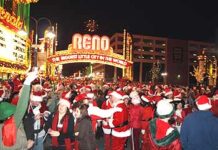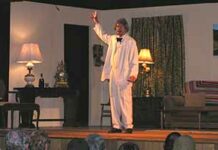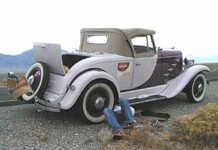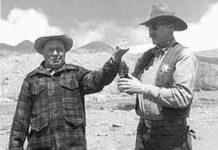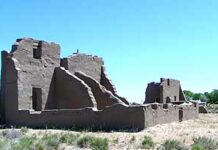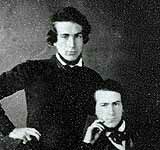My son John and I arrived in Elko late on a sunny summer afternoon.

John had spent 15 months as a platoon leader in Baghdad, and this excursion into the sagebrush was our first chance to spend time together since his return to the states. We’d spent our second day traveling from Winnemucca by way of Golconda, Midas and Tuscarora, and we were ready for a taste of city life.
And what a tasty little city Elko has become. It’s a favorite of mine, right up there with Paris, Prague, Barcelona and Ely.
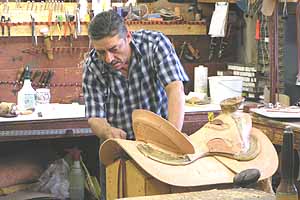
It still shows its cowtown roots everywhere you look, but it’s also showing cosmopolitan touches it never had before. The best place to see this for yourself is on the sidewalk at Fifth and Commercial Street. Capriola’s is on the same corner it has occupied since time immemorial, selling everything for the rancher, cowboy and dude. Downstairs is a rich display of snap-button shirts, broad-brimmed hats, tooled belts and purses and precious metal doodads ranging from belt buckles to spurs. Upstairs is the rope and saddle shop and a small museum dedicated to the shop’s heritage which dates back to the famous J.S. Garcia store established in the late 19th century. This is old Elko, the Elko your
grandfather would recognize.
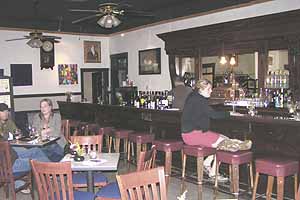
And right next door is what used to be Jack’s Bar with a buzzing red neon sign outside and nine old men living upstairs. Now it’s the Gallery Bar serving martinis and fine wine, and the rooms upstairs have been refreshed, renewed, replumbed and repainted. New furnishings too, and our cozy rooms might have been in a boutique hotel in San Francisco. This is new Elko, and grandpa would love it.
Walk a block west to the Stockmen’s Hotel and around back to the Star and you’re in old Elko again. The venerable Stockmens has been decorated with murals by Larry Bute, and the Star — the most famous of Elko’s traditional Basque restaurants — has new owners, but they’re both operated in the old familiar way.
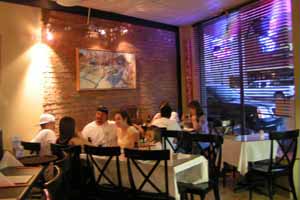
But take a short walk north, across the enormous parking lot that was once the railroad switching yard, past the Western Folklife Center and halfway up the next block to The Flying Fish restaurant(#382, the space previously occupied by the 5th Street Bistro) and you’re in new Elko again. The menu is sushi (sushi in Elko!), “Asian fusion” and Italian, and the walls are decorated with paintings by Ron Artaud, a Tuscarora artist of wide reputation. Once again you might be in a trendy new spot in a major metropolis, and the food is superb.
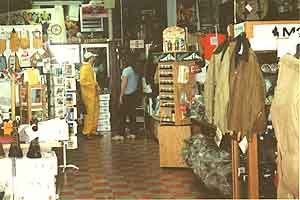
And it’s not just the food and drink, it’s the shopping too. Walk another half-block north past the Flying Fish to Idaho Street, once upon a time US 40 and still Elko’s principal east-west boulevard. The 400 block is a combination of old Elko — Anacabe’s Elko General Merchandise has been at #416 since 1937, and is still outfitting serious outdoors-men, re-creationists and workmen alike (as well as welcoming tourists who stop in just for the atmosphere) — and new Elko: La Cucina Fresca at #460 is devoted to providing Elkoans with the newest kitchenware from around the world and Simple Pleasures, across the street at #437, offers a highly sophisticated array of contemporary household furnishings and appointments. It’s an intriguing and enjoyable mix.

And there are shops that can’t be easily described as either old or new. B.J. Bull on the west end of Idaho Street is another pleasant surprise — a bakery devoted to delicious Cornish pasties and fruit pies. You can fill a cooler with frozen pasties and take them with you (along with a bottle of the piquant sauce). Quite yummy.
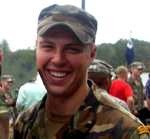
We were out early the next day, after big mochas from the Evergreen Flower Shop/Primo Coffee Co. down the street, which we enjoyed on our sunny balcony overlooking the garden behind the bar.
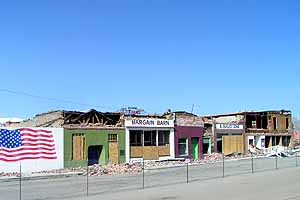
At Wells we toured the damage from February’s earthquake before turning south on US 93 a dozen miles to the Clover Valley Road, and pulling in at the first ranch on the right. This is Ground Zero for Nevada beer drinkers: the home of Ruby Mountain Brewing Company, aka Steve and Maggie Safford. They make several varieties of their nectar and ship it to distributors in Nevada and surrounding states. When we headed out again, we had a keg of Ruby Mountain Amber Ale in the back of the Jeep for John’s upcoming welcome home party. The sun was shining, the sky was blue, the birds were singing. Life is good.
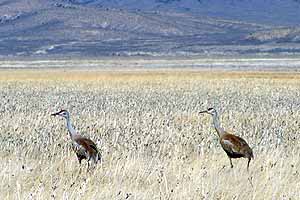
We continued down the east side of the Rubies, tucking in closer via Nevada Highway 229 and moving south through the Ruby Marshes, where more than 200 species of birds live in the beautiful landscape of springs, marshes, ditches and canals, with swans, ducks, cranes, herons and eagles among them. The fishing is great too, with five species of trout and bass which have given rise to the little settlement of Shantytown.
This was the route of the Hastings Cutoff, an emigrant route described as a short-cut, but actually much longer than the main routes west. The Donner Party came this way, which is why they reached the Sierra so late in the year. We knew the history, but we had no sense of impending disaster as we churned along, pushing on south instead of turning back around the west side of the Rubies as the Donners had done. When we struck US 50 we turned west for the final 20 miles to Eureka.
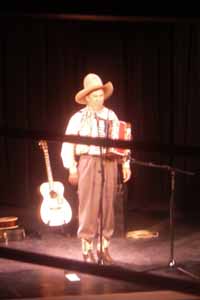
We arrived in good time to join the rest of the family for a performance by Sourdough Slim at the Opera House. If there can be a highlight to a trip that was all highlights, this was it. Slim was at his best — although the poor sap still hasn’t figured out how to get his harmonica-holder on and off without snagging it on his ears. He won over the audience with his wide repertoire of friendly old songs from the songbooks of Roy Rogers, Sons of the Pioneers and Riders of the Purple Sage, and he knocked us out with his yodeling. I’d have driven to Eureka just to hear his grand finale yodel. Magnificent! He could be the King of the Alps if he wanted to be. If yodeling was an Olympic event, the Swiss team would have to settle for the silver.
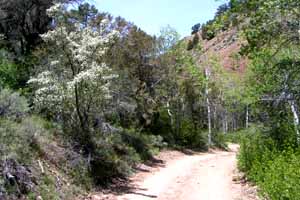
When we left Eureka the next morning we added John’s brother Chris to the party,
and he drove us west on US 50 to the Antelope Valley Road and then turned south about 17 miles on the good graded gravel surface, to a nameless road leading west into the Monitor Range. This 25-mile climb and descent is like visiting another world, a cooler, thickly wooded, rarely-visited world, and it emerges on the west side of the mountains by way of Wallace Canyon to intersect the Monitor Valley Road at the more or less exact Geographic Center of Nevada. Quite a thrilling moment, as you can imagine, as the three of us milled around earnestly in the middle of nowhere, seeking The Very Spot.
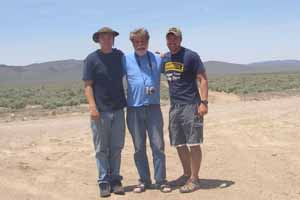
There’s nothing to indicate the unique significance of the spot, or even its precise location, a huge oversight it seems to me. If there were a marker, or better yet a monumental sculpture of some epic kind, visitors would seek it out: “If we build it, they will come.” Won’t they? Or is it better that there’s no there there?
In California, to take a neighboring example, there’s at least a sign (about 20 miles west of Yosemite National Park).
We followed the Monitor Valley Road south to Diana’s Punch Bowl, that great solitary steaming boil on Nevada’s butt, marveled, and drove on the 35 miles to Belmont. This lively mining camp took the Nye County seat from Ione in 1867, and lost it to Tonopah in 1905. The old town died slowly away after that, with a single resident remaining in the 1960s.
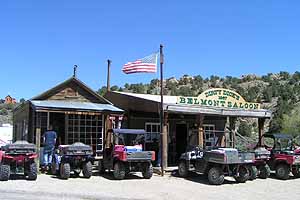
Today there is an excellent B&B in a collection of old mining structures, Dirty Dick’s Saloon is open most of the time (although Dick himself has gone), and the distinguished Belmont Court House still stands intact among the stone ruins of the rest of the town. We spent a pleasant hour wandering the town. The young men found a horseshoe pit complete with shoes and became boys again. There is a cemetery toward the bottom of the hill. The last time John was here he was nine. There was snow on the ground, and he threw himself down to make snow angels between the grave markers.
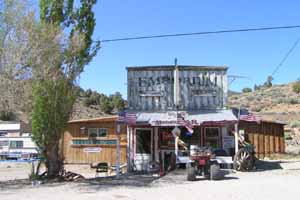
An easy road took us west over the Toquimas to Manhattan. Gold had been found here in the 1860s, but not enough to attract investment, and the strike petered out. A new discovery in 1905, however, prompted an immediate boom, and by January 1906 Manhattan had 4,000 residents. Mining continued here until 1947, but it has been hard times since then, and the old camp is looking somewhat shabby now, with only two saloons still holding out on the long Main Street. We stopped at the Manhattan Bar for what passed as a snack, and how we missed this fabulous exhibit I don’t know. But we did.
From Manhattan we went west down to the highway (Nevada 376), went south a mile toward Tonopah, and then turned west on the graded gravel road to San Antone, and zigzagged westward across the rumpled landscape via a crazyquilt of dirt roads toward US 95. We figured to reach it before sundown, and then just glide home the last 125 miles.
We figured wrong.

As John recounts in his memoir of the trip, we had an episode with a horse. And right after that we had an episode with the right rear tire, leading eventually to an episode with a tow truck and culminating with an episode with three chicken-fried steaks at the El Cap in Hawthorne. We got home the next morning.

What a fine time we had, and if you have a taste for the vastness and semi-wildness found away from the highways, you can have a fine time of your own almost anywhere in Nevada. Some people will want to fish; no problem. Or hike; no problem. Use a voyage like this to get off by yourself for a day, or to share a pleasant adventure with someone you love. You don’t have to go as far as we did, or even have a destination, but there are a few things you do need:
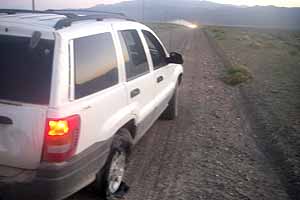
Good maps, jack, lug wrench, spare wheel and tire (not a doughnut), water (both for you and for the car), blankets, shovel. Having a cell phone isn’t the same kind of safety device that it is on the highway. We had to hobble along on our flat tire for more than 15 miles before we got within range of a microwave tower. Always check locally before you head out into unfamiliar territory — when we stopped in at Waterhole #1 at Golconda the bartender warned us about flooding after rains the previous week. It had resulted in mud so deep that trucks had bogged down and drivers had to hike back. In her friendly way, she called ahead and discovered the roads had dried and everything was copacetic.
Quick notes from beyond the mountains:
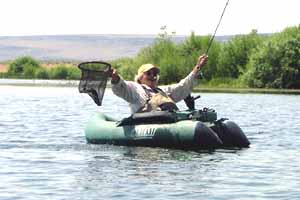 We weren’t the only people out enjoying the Nevada outback. These photos were taken on a fishing trip to Owyhee on the Idaho border. “Some of the time it was as if we were the last people on earth. We did not see or hear another human being for more than 24 hours. 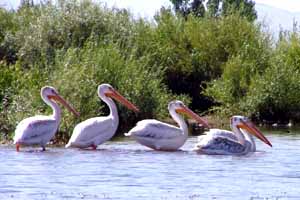 The coyotes yipping back and forth — what a lullaby to fall asleep to or to wake up with in the morning!” The coyotes yipping back and forth — what a lullaby to fall asleep to or to wake up with in the morning!” |
Archaeologists working in Virginia City are digging at the original site of Thomas Maguire’s Opera House on D Street. “Maguire opened one of the West’s most important theaters in July 1863,” said state historic preservation office Ron James. “Because the site is in the center of town, we hope it will yield information not only on the opera house, but also on earlier development,” said James. John Piper, a local businessman and politician, purchased it in 1867. Sam Clemens, who took the pen name Mark Twain when he worked as a reporter for the Territorial Enterprise, lectured twice on the stage during 1866 and 1868 visits to his former home and many other internationally-known acts appeared at the Maguire-Piper theater before it burned during the great fire of 1875. At that point, Piper relocated the institution to the corner of B and Union streets . . . A free “Desert Dreaming Film Program” will be presented at the Red Barn Art Center in Rhyolite by the Goldwell Open Air Museum at 6 pm on September 20. The films are “Desert Dreamers”, a portrait of the Mojave Desert’s inhabitants who find happiness in following their dreams, and “Plagues and Pleasures on the Salton Sea,” site of one of America’s worst ecological disasters.
A few hardy eccentrics hang on to hope and through their perceptions and misperceptions, the strange history and unexpected beauty of the Salton Sea is revealed. Bring folding chairs or blankets. More info at 702-870-9946 . . . Or, if you’re in the northern part of the state on that date, head for the Delta Saloon Parking lot in Virginia City for a free world music concert of international bands playing jazz to bluegrass featuring the music of Drinking with the Clowns, Nevada Rain and Hot Club Derenaux. Refreshments will be available at local saloons and C street stores will stay open late. There will be a special 4 pm Virginia & Truckee steam train . . . At 7 pm on Saturday, September 13, the world-famous German-born magicians Seigfried and Roy return to their roots by striking the first keg tap with a wooden Bürgermeister’s mallet to mark the official start of Oktoberfest 2008 at the Hofbräuhaus Las Vegas . . .
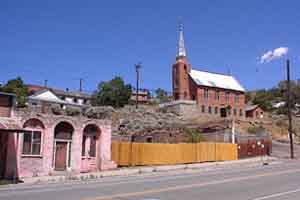
The National Cowboy Poetry Gathering Website has been updated to make events like the National Cowboy Poetry Gathering easier to find. Events and exhibits are easier to find and the new calendar allows you to quickly see what’s going on in Elko and around the West . . . The Nevada Historical Society presents “Robert Cole Caples: Rooted in Nevada” from August 25 to October 17, 2008, an exhibit highlighting Caples’ art and his deep connection to the Nevada landscape and its original inhabitants . . . “Minus 5 Experience”, a 2,000 square-foot lounge made entirely of ice opens at Mandalay Bay on the Las Vegas Strip in September. It’s owned and operated by Minus 5 Group, a New Zealand-based company that operates six other Minus 5 ice lounges in three countries around the globe. Its ice-chapel, complete with colorful, stained “ice” windows and pews, ice sculptures and an ice candelabra, will be available for weddings and the Minus 5 Lodge, a warm, rustic pub will allow visitors to thaw out . . . On Friday, Sept. 26th (National American Indian Day) from 10 am to 1 pm the Stewart Indian School will host a grand opening and dedication of its new audio “Talking” Trail, offering personal memories from the school’s former students and employees. The Trail is a self-guided walking tour of the campus with 20 points of interest and audio stories. The State of Nevada Indian Commission will host speakers and an inaugural tour, followed by American Indian cultural performances and a reception.
Overheard at Dirty Dick’s Bar in Belmont: “I met the perfect woman once, but it didn’t work out. She was looking for the perfect man.”
Happy Highways,



